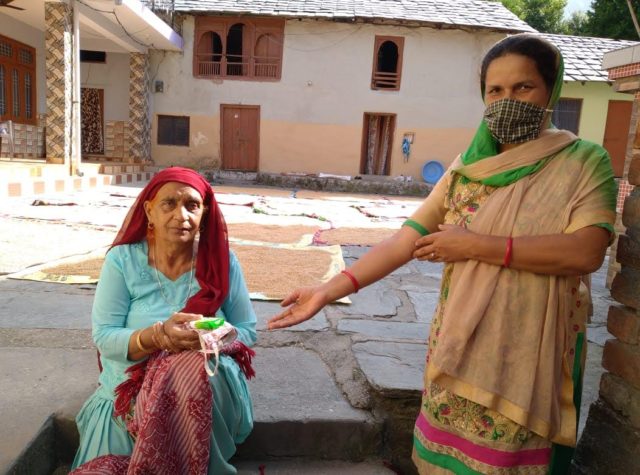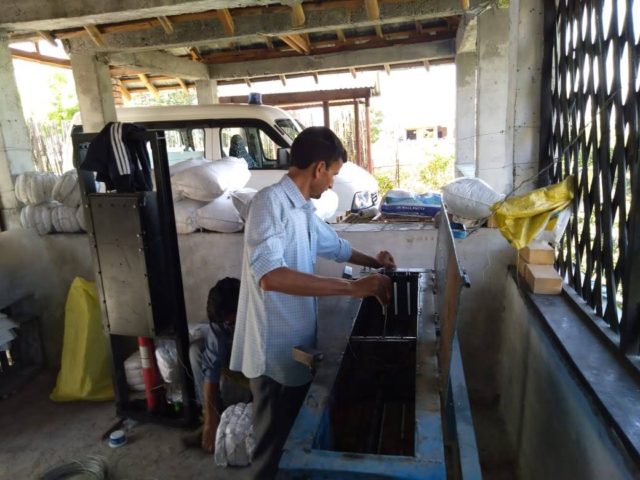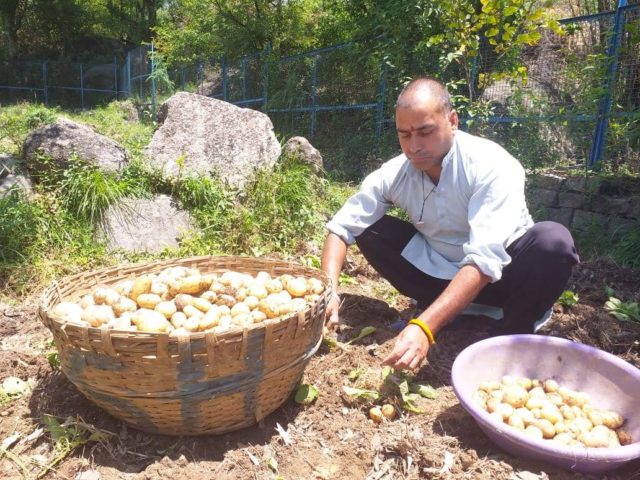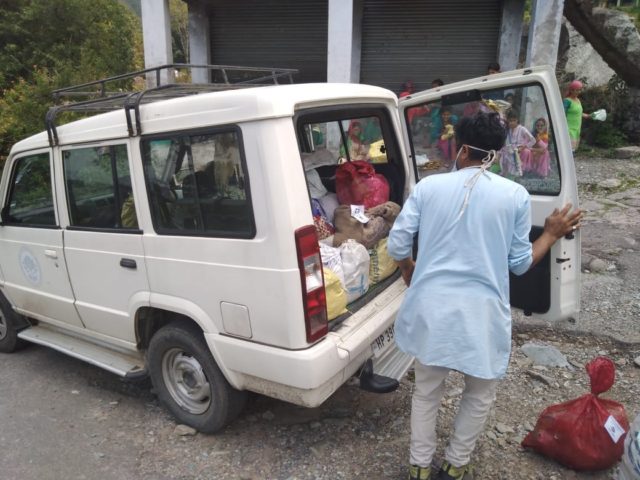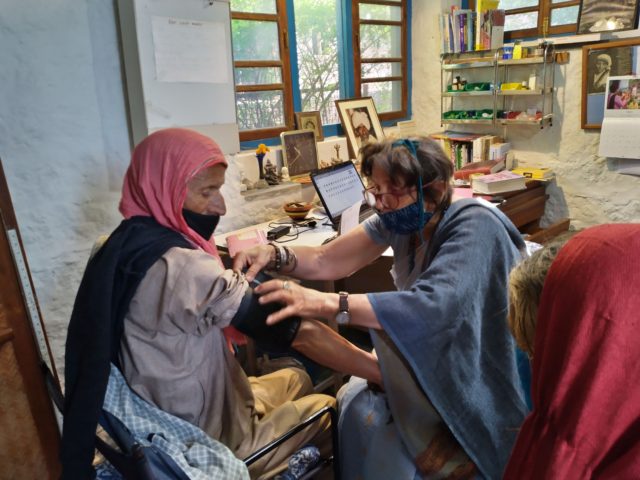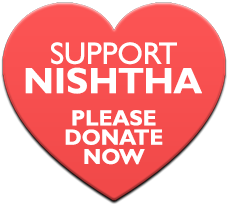Since India closed its inter-state borders on 24th March without warning, we have watched in dismay while millions of itinerant labourers from rural states working in the large cities, have tried to make their way home, mostly on foot. Workers, students and people who were travelling in states where they did not live, found themselves caught in places that were not their homes. Without work or income or functioning ration cards they were thrown into a panic. By mid-April, state governments had no choice but to issue permits for them to return home by whatever means they could find. Around 60,000 people have now left Himachal Pradesh, while more than 200,000 people have returned here, though not always to the welcome they may have wished for.
Everyone here was relieved that by mid-April the strict lockdown had had the desired effect of making Himachal practically covid free. Now, there was a threat that people coming back into the state would bring the virus with them. There were cases of people being ostracised and being met with anger in the villages. Consequently, the authorities have placed everyone who returned into institutional or strict home quarantine. All 87 cases that have emerged in Kangra district since that time have occurred among people who returned from outside and were in quarantine. Fortunately, many are now recovered and there have been no deaths here, despite the virus continuing to peak in other parts of India—especially the cities.
Nevertheless, the effect of the lockdown on the economic and psychological health of the state has been devastating. Loss of earnings for up to 70% of the workforce, who because they are neither government nor company employees and have no guaranteed salaries, is hitting hard now that we are into the third month. There is a pressing need to identify and provide for the most vulnerable in our community who have no source of income. Women and children with no land, for whom the very limited diet provided through the government food security scheme is insufficient need additional food supplements.
We began the month by assisting Jagori, our sister organisation, who have a network of field workers able to identity adolescent girls from very poor families, almost all of whom are very anaemic. For two weeks, we sent a team out in our vehicle delivering nutrition rich packages throughout the Kangra valley, reaching girls in villages and remote hamlets, sometimes on very rough roads. Jagori have the procurement of supplies very well worked out and it is more effective to work with them to ensure that all the areas are properly covered without duplication. Nishtha is particularly concerned about students and daughters of our single women, many of whom come from very simple homes. Our activists have been contacting them and ensuring they are included in the Jagori program.
We have now launched our own nutrition program, for primary school children, providing each child in our area with a nutrition rich package. Each one includes peanuts, roast channa, dried dates, soya nuggets and fruit. We brought our farming team in off the fields during the heat the day to help the community staff measure out and pack each item in individual paper packets. Although there is no joy in receiving food hand-outs, parents are grateful for these nutritious and tasty snacks, which they can’t even think of giving their children during these difficult times. We have so far provided for 150 children from 5 schools, co-ordinating with the school principals, who will call the families every 15 days until schools reopen. Packages are also being delivered to disabled children and are ready in the clinic for young patients from other areas.
Our medical team continues to work hard to provide a caring service for the poor and elderly from the local area. Dr. Barbara finds it quite a challenge to reach out to the person behind the mask, who sits in front of her. Masks make it more difficult to understand the real nature of the patient’s problems and find the right treatment. Many—including young men—complain of panic attacks, sleeplessness and depression. She finds herself prescribing more anti-depressants and sleeping pills than she ever would normally, and by the end of each clinic she herself is quite exhausted.
It is a huge help that Dr Kusum understands the language of patients from the Nepalese labour community living above Khanyara, most of whom have not left because they are sufficiently established here to have ration cards. However, they have had no work because the slate mines are closed. They live in exceptionally poor conditions on the side of the mountain and have no resources to fall back on. Often reluctant to accept medication or treatment, they trust Dr Kusum when she speaks to them in their native tongue.
Patients who need them are given a homemade mask and a bar of soap, as are all the women our activists contact in the villages. They all speak endlessly to encourage hand-washing and social-distancing and check that single women’s government health cards are up to date and that they know how to use them. Most of all our activists present a friendly comforting face when they visit in these days of isolation and fear. We have posted a short video showing our work in the clinic on Facebook and are preparing a similar one about the Single Women in the villages. Activists have taken these short video clips themselves, giving us a rare insight into the locations and people they meet. These can also be found under “news” on the Nishtha website.
We have started interviewing students, who are hoping to join our sponsorship program this year, although it is still unclear when college exams will be held and when the college enrolment will take place. The school board exam results have not come out yet, so we only have their 10th grade results to go on. Some of the girl students we met are earning a little money tutoring children who can’t go to school.
We are discussing whether to offer assistance to students, who are already enrolled in college, but will not be able to continue without financial help due to their family’s lack of income. Many families around here have small plots of land and almost all have ration cards so they will not starve, but without the income from running taxis, working in shops and businesses, they have very little cash to spare. Anything that requires a financial outlay is likely to be cut, particularly private school fees. Without doubt there will be more children enrolled in the government schools this year.
In order to understand how poor families living on the mountain behind us, are managing, since most of them have no land to fall back on and are dependent on daily earnings, we are conducting a house to house survey. While some labourers are finding work, many continue, for the third month to have no income at all. A number of women in the villages above Khanyara and Yol work as housemaids in middle class or officers’ homes, but have been unable to get to work because there has been no transport. So many have so very little. When a young man died in that area last week, Mohinder went to the house and found they had no money to pay for the cremation or provide for the mourners. They quite literally had no food in the house and no resources. He organised a collection so they could carry out the funeral.
The stoic response of the people is chastening. They do not grumble and complain, but sadly accept the situation they find themselves in. Some whose lives are too difficult, sink into despair. Today, I heard the sad story of a Nepalese woman on her own with four children, who, unable to earn any money by running her momo stall, committed suicide. Our survey is also revealing a surprising number of single women and people with disabilities who we previously didn’t know about, which is at least one blessing to come out of this crisis.
31st May 2020
